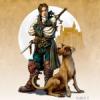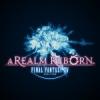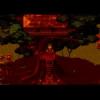What better way to kick off our new series of weekly articles looking at classic gaming moments than discussing Final Fantasy VII?
When people are asked to list games synonymous with Sony‘s first Playstation console, there’s a few names that are almost guaranteed to come up: WipEout, Tekken, Metal Gear Solid… and, of course, Final Fantasy VII.
Back in 1997, the RPG was still a relatively niche genre in the west, particularly on consoles. Squaresofts‘ Final Fantasy series was anything but a household name outside of its native Japan, with most games not even released in western territories. Final Fantasy VII changed all that, selling millions of copies (and famously holding the record for - allegedly - being the most returned game in the history of the medium), bringing the RPG to the masses and rocketing the Final Fantasy brand into the stratosphere, a position it continues to hold to this day. While it doesn’t hold the position of being the best game in the series - Final Fantasy VI on the Super Famicom continues to the be series’ highpoint - its storyline, tight battle system and cast of memorable characters have given the title an appeal that has endured for over 15 years and made certain that it’s continued to stick in the mind and generate column inches devoted to it long after the credits rolled.
One thing has almost single-handedly been responsible for that - the death of Aerith Gainsborough (also known as Aeris on these shores).
While the seventh installment in the venerable series enjoys a litany of scenes which stick in the mind - from an early indulgence in a spot of cross-dressing, snowboarding down a snowy mountainside or Sephiroth’s planet-smashing Supernova attack - all of them pale in significance next to the moment that Aerith is murdered at the end of Disc 1.
It’s hard these days to convey the shock that the end of the game’s first disc generated. These days we’re so used to games containing moments designed to generate shock from the player that a degree of ennui has set in. We’ve killed innocent civilians in Russian airports in Call of Duty: Modern Warfare 2, Metal Gear Solid 2: Sons of Liberty pulled an unexpected bait-and-switch with its protagonists, and Bioshock… well, we’ll get around to Bioshock at a later date. But in 1997, these sorts of shocking plot moments in gaming were rare and the death of Aerith is something that many players have even credited with making them cry. But why?
The answer is simple: because Aerith’s personality was so well-developed over the course of the first disc that having her so cruelly snatched away at the end of it felt almost like having a limb removed.
At first you can’t quite believe it - after all, you’d only just obtained her ultimate weapon, a fact that was actually a clever ruse to lull you into a false sense of security. Surely she can’t be dead! How dare they?!
But as the white materia went tumbling down the steps and Nobuo Uematsu‘s now-legendary Aerith’s Theme started to play, reality kicked in. Squaresoft - as Square Enix were then known - had done the unthinkable. And by god, we hated them for it. Aerith had died, and as Cloud gently lowered her into her final resting place underwater, a little piece of our hearts died with her.
There was only one thing to be done - kill the bastard that had slain her and wipe the smirk off of his murderous face.
From her early introduction as a flower-seller on the streets of Midgar to her burgeoning role as a crucial member of Eco-terrorism group AVALANCHE, Aerith’s gentle nature and blossoming romance with main protagonist Cloud Strife quickly gained her a special place in the hearts of many a gamer as the cast of characters globe-trotted around Gaia in their pursuit of silver-haired übervillain, Sephiroth. Her demise in the closing moments of Disc 1 was a masterstroke in story progression; not only was it unexpected, but the loss of a character that had been built up with so much care and attention to detail ensured that you truly hated Sephiroth, driving you through the remaining two discs until you finally got your chance to reap your revenge in a climactic final battle which sees Cloud truly go to town on the baddie with his iconic Buster sword.
In more recent years as Square Enix has increasingly sought to capitalize on the game’s success, Aerith has returned, making appearances in titles such as Kingdom Hearts, Crisis Core and mediocre CGI feature film Final Fantasy: Advent Children. But in bowing to fan pressure, Square succeeded in little except to cheapen her death in the first place. We mourned Aerith; bringing her back felt like a betrayal of that grief, a cheap bait-and-switch.
In the years since Final Fantasy VII, many games have attempted to recreate the shock and sense of loss generated by the death of Aerith - not least subsequent installments of Final Fantasy. But few, if any, have managed to top the moment when the humble flower girl met her maker at the end of Sephiroth’s blade. For that reason above all others, Final Fantasy VII sticks in the hearts and minds of gamers and ensures that to this day it’s held up as a watershed moment in videogame storytelling.








